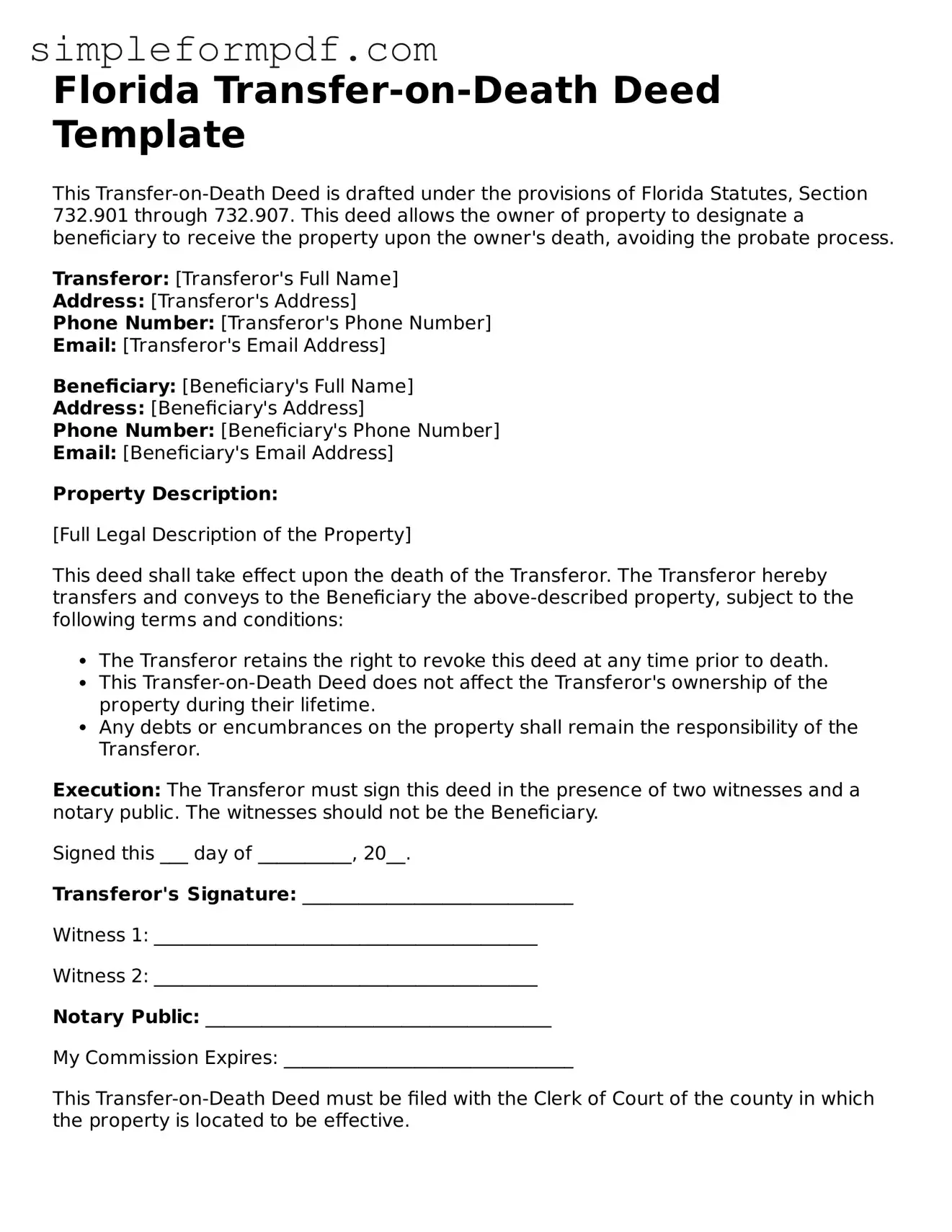Florida Transfer-on-Death Deed Template
This Transfer-on-Death Deed is drafted under the provisions of Florida Statutes, Section 732.901 through 732.907. This deed allows the owner of property to designate a beneficiary to receive the property upon the owner's death, avoiding the probate process.
Transferor: [Transferor's Full Name]
Address: [Transferor's Address]
Phone Number: [Transferor's Phone Number]
Email: [Transferor's Email Address]
Beneficiary: [Beneficiary's Full Name]
Address: [Beneficiary's Address]
Phone Number: [Beneficiary's Phone Number]
Email: [Beneficiary's Email Address]
Property Description:
[Full Legal Description of the Property]
This deed shall take effect upon the death of the Transferor. The Transferor hereby transfers and conveys to the Beneficiary the above-described property, subject to the following terms and conditions:
- The Transferor retains the right to revoke this deed at any time prior to death.
- This Transfer-on-Death Deed does not affect the Transferor's ownership of the property during their lifetime.
- Any debts or encumbrances on the property shall remain the responsibility of the Transferor.
Execution: The Transferor must sign this deed in the presence of two witnesses and a notary public. The witnesses should not be the Beneficiary.
Signed this ___ day of __________, 20__.
Transferor's Signature: _____________________________
Witness 1: _________________________________________
Witness 2: _________________________________________
Notary Public: _____________________________________
My Commission Expires: _______________________________
This Transfer-on-Death Deed must be filed with the Clerk of Court of the county in which the property is located to be effective.
